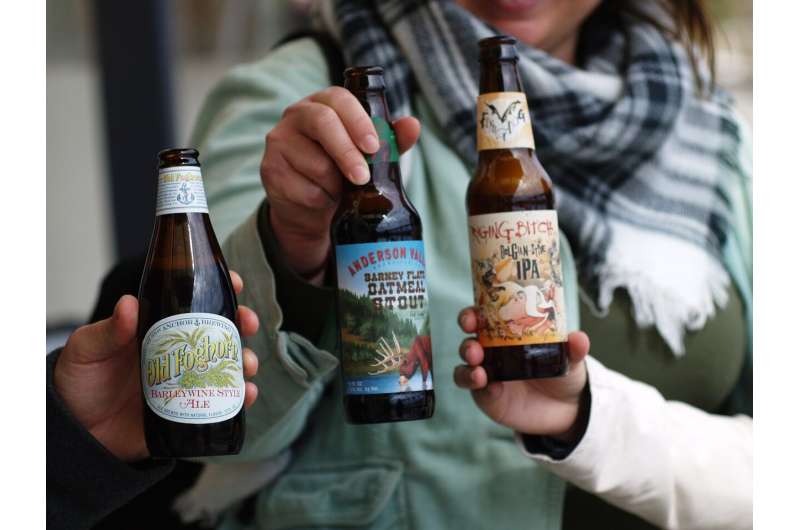This article has been reviewed according to Science X's editorial process and policies. Editors have highlighted the following attributes while ensuring the content's credibility:
fact-checked
proofread
How craft-based firms project authenticity through credibly and visibly communicating their identity

Consumers are drawn to authenticity when it comes to craft-based firms, and a study published in the Strategic Entrepreneurship Journal explores what factors can help give credence to such a quality.
The study, authored by Stanislav D. Dobrev of the University of Wisconsin-Milwaukee and J. Cameron Verhaal of Tulane University, looked at how managers in identity-driven markets are challenged to maintain their authenticity as their company's scale of operations expands. In such craft industries, the authors note, overt claims of authenticity by producers are ineffective.
By studying the craft beer market, Dobrev and Verhaal found that managers can leverage three strategic assets to credibly and visibly communicate their firm's identity: organizational resources, capabilities, and position.
"While authenticity used to be predominantly assessed as a quality of a person or an object, increasingly, it is being evaluated at the level of organizations," Dobrev says. "So we need a theory that explains whether organizations can legitimately claim to be authentic and be perceived as such."
The authors established that authenticity matters and is beneficial to producers, but it was less clear how to project an authentic identity that the audience would believe. The modern consumer is jaded, skeptical, and even cynical about brands—and this is especially true with authenticity claims because, the authors say, authenticity belies self-promotion by nature. So the central research question became: How do organizations succeed in presenting themselves as authentic?
One market where craft and authenticity are inextricably intertwined is the microbrewery and brewpub industry. Here, the driving motivation is to make beer "for beer's sake" and not for the primary purpose of making money.
The research team collected data from the website beeradvocate.com, a respected source that posts reviews of beers by craft beer enthusiasts.
They coded the individual reviews using definitions of authenticity and created a score for each review of each beer. They aggregated reviews of beers by the same brewery to produce an authenticity score for each producer for each year from 1996 to 2012, which allowed them to look at authenticity perceptions for the brewers over time and to statistically test what predicts the perceived levels of authenticity among consumers.
They also coded many other features of the beers (e.g., style, awards won, naming strategy, perceived quality, ingredients) and of the producers (e.g., whether independently owned, range of beer styles, popularity). Finally, they coded the average appeal of each producer based on the combined rankings of its beers across all website reviews.
The authors found three main factors that play a role in credible claims of authenticity. The first, organizational resources, refers to a company's independence as an ownership structure: Many successful craft producers enter production alliances with mass producers to increase volume, which tends to suggest to its audience that it's shifted to placing profits first.
Second is capabilities, or learning how to make different styles of beers: A focus on a single capability suggests a profit-driven operation because it's more profitable to just make one beer style. Lastly, position refers to third-party endorsements, where others make the authenticity claim for the company. For example, winning an award by an independent third party can be thought of as an authenticity endorsement because that organization is charged with upholding and promoting the status of independent craft beer.
"Our theory emphasizes three pillars that help organizations to appear authentic even as they grow and become successful—a development that may erode perceptions of authenticity," Dobrev says.
"First, they have to convey a message to their target audience that they are what the audience considers authentic. … Second, the facets that make a company authentic have to be visible. This is needed because, again, if a company just says 'we're authentic,' that will likely backfire. ... And third, for the same reason, the expressions or claims of authenticity have to be credible. Credibility comes with costly, often irreversible commitments—like investment in technology."
More information: Stanislav D. Dobrev et al, Organizational authenticity: How craft‐based ventures manage authentic identities and audience appeal, Strategic Entrepreneurship Journal (2024). DOI: 10.1002/sej.1496
Provided by Strategic Management Society





















